|
Chapeau is situated in the very prosperous town of Bloemendaal, west of Amsterdam near the coast. It can be reached by train from Amsterdam Central station in just over 20 minutes, the restaurant being a short walk from the little station. It opened in 1984, gaining a Michelin star in 2002 and a second in 2012. The head chef Jan Sobecki came here as sous chef in 2008, having previously worked at Eleven Madison Park and Ledoyen. He became head chef in 2012, immediately gaining the restaurant an additional Michelin star. The dining room seats 40 customers when full, and there is additional terrace seating in good weather. There were tasting menus from three courses at €55 (available Tuesday – Thursday only), four courses at €75 (£54) through to six courses at €110 (£79). The wine list included bottles such as Anselmi San Vinceno 2011 at €39.50 compared to a shop price of €18, Somni Priorat 2012 at €105 for a wine that can be found in the high street for €42, and the lovely Vega Sicilia Unico Valbuena 2002 at a very reasonable €195 compared to a retail price of €150. Given that this is the joint wealthiest town in the Netherlands, it is not surprising that there are some grander labels on offer too, such as Lucien Le Moine Echezaux 2009 at €325 for a bottle that retails at €252, and Masseto Ornellaia 2004 at a bargain €375 that retails for much more of this, could you find it. A series of nibbles began the meal. Scallop slices served on a spoon were grilled in chive oil with foam of Indian tonic and miso mayonnaise. The scallops wee nicely sweet and the miso worked well with the shellfish (18/20). A “cookie” with cream of duck liver came with a little chocolate and crumble of pistachio, with citrus gel and zest. The chocolate flavour was mercifully subtle, the duck liver excellent, balanced by the acidity of the zest (17/20). Hamachi (amberjack) came with toro, soy, cucumber, yuzu vinaigrette and topped with a courgette flower. The hamachi was excellent, its oriental accompaniments working well to complement the fish (18/20). Bread was sourdough, and although bought in was surprisingly good; brioche was made in house (17/20). A particularly attractive dish was a deceptively simple sounding selection of vegetables, with beetroot, potato, golden beetroot, beetroot macaron with a vinaigrette of leek, star anise and superb rouille. The vegetabes came via Rungis market in Paris and were of exceptional quality (19/20). This was followed by a crispy cylinder of steak tartare made with Simmental beef, with horseradish, beans, crispy nori and wasabi, all in a beef bouillon made with dashi and an oil of roast beef. The beef itself was top quality, having lovely flavour, and the spicy elements lifted the taste of the dish yet were in careful balance (19/20). Carabineros prawns (the prized deep sea red prawns) came in this case from the south of Spain, and were grilled a la plancha. They came with sesame crisps, crudités of fennel, oriental vinaigrette with coffee oil and a little raw avocado. The shellfish had lovely flavour and again the taste balance of the dish elements was hard to criticise (19/20). Gnocchi came with tomato and basil oil, topped with Parmesan foam and a surprising yet effective bottom layer of molasses. The textures were excellent, the flavours deep, the hint of sweetness somehow working, a lovely dish (19/20). Red mullet was grilled and came with coriander pesto, couscous, mango, cream of coriander, star anise powder and a gravy of smoked mullet liver that was cooked with cognac and butter. The fish was of high quality, the mango providing some useful acidity (18/20). Anjou pigeon was cooked whole and presented at the table before being taken back to the kitchen to be rested and plated. It was cooked with thyme and root vegetables. When it reappeared the meat had been hollowed out and had a centre of ballotine of foie gras, with the heart and stewed leg of pigeon served separately. With the meat came Jerusalem artichoke, morels, dates, green asparagus from France white asparagus from Holland, artichokes parsley oil and the cooking juices. The pigeon had gorgeous flavour and had unusually good texture, the foie gras adding a little luxury but being nicely balanced by the vegetables (20/20). For dessert, a lemon “dome” came with lemon grass ice cream, both lemon and Granny smith ice cream, confit lemon, verbena foam and lemon granite. This was refreshing and carefully made, the various textures providing pleasing contrasts (18/20). With coffee came a few more sweet treats, in particular glorious lemon Madeleines. Service was excellent, and the bill for the tasting menu and some good wine came to €170 (£122) per person. If you went for the shorter menu and chose more modest wine then a typical cost per head would be around £85 a head, an absolute steal for cooking of this quality. I only actually visited Chapeau at the insistence of a Dutch foodie friend, as despite its second Michelin star it has a very low profile, at least on the English language part of the internet. Yet the cooking here was a revelation. This is definitely a place where the chef focuses on being in the kitchen actually cooking rather than swanning around doing publicity and attending conferences. Many modern chefs are good at pretty dish presentation, and the dishes here were gorgeous to look at, but this one is unusually focused on product quality and flavour too, and dish after dish was superb. For me this was comfortably a three-star level meal. |

-
 This restaurant has now closed.
This restaurant has now closed.

-
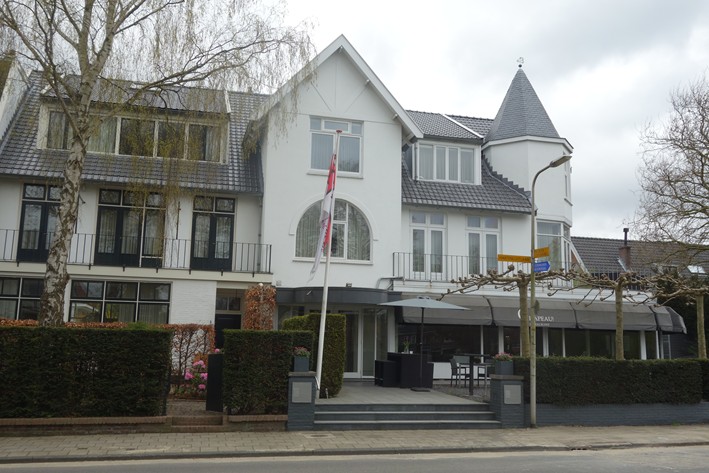 outside
outside

-
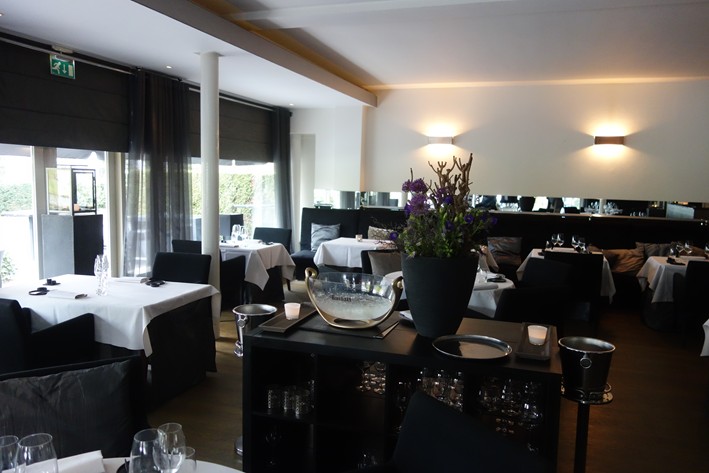 seating
seating

-
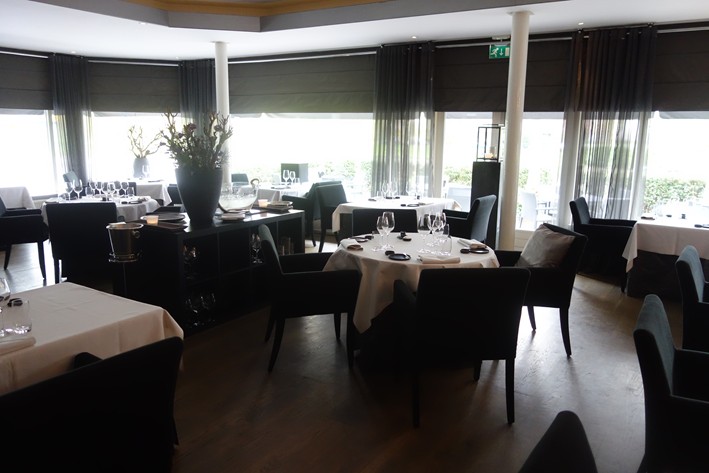 dining room
dining room

-
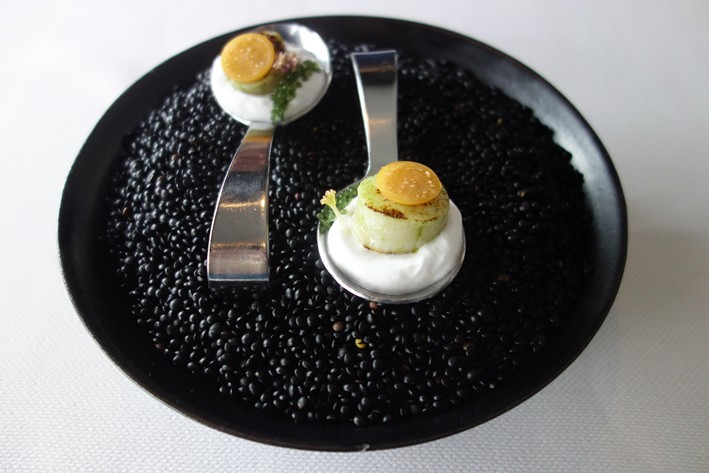 scallop nibbles
scallop nibbles

-
 duck liver nibble
duck liver nibble

-
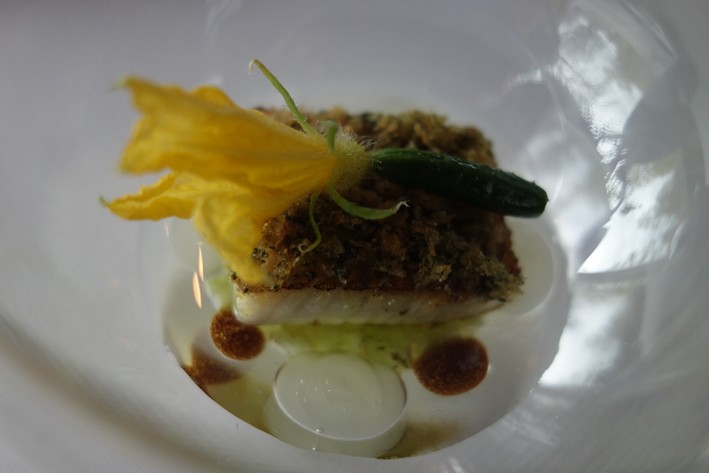 hamachi
hamachi

-
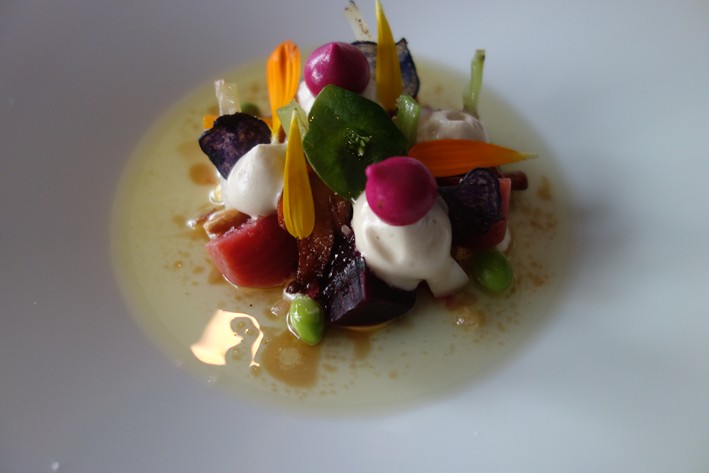 spring vegetables
spring vegetables

-
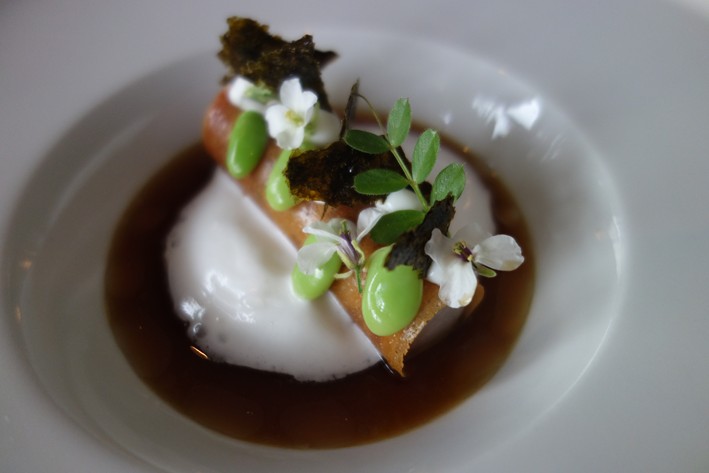 beef tartare cylinder
beef tartare cylinder

-
 gnocchi
gnocchi

-
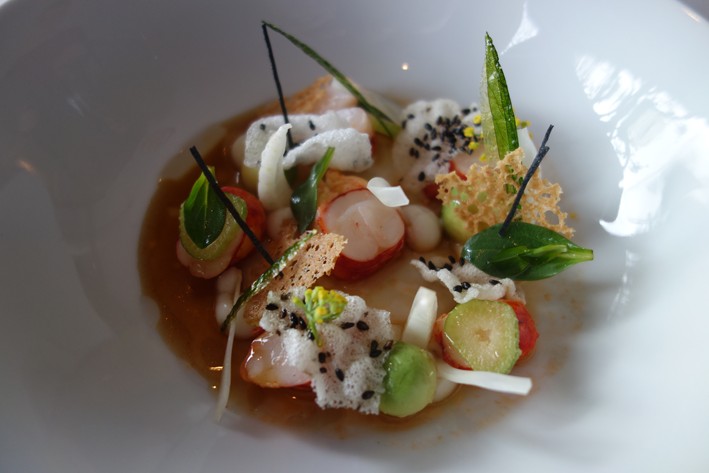 prawns
prawns

-
 mullet
mullet

-
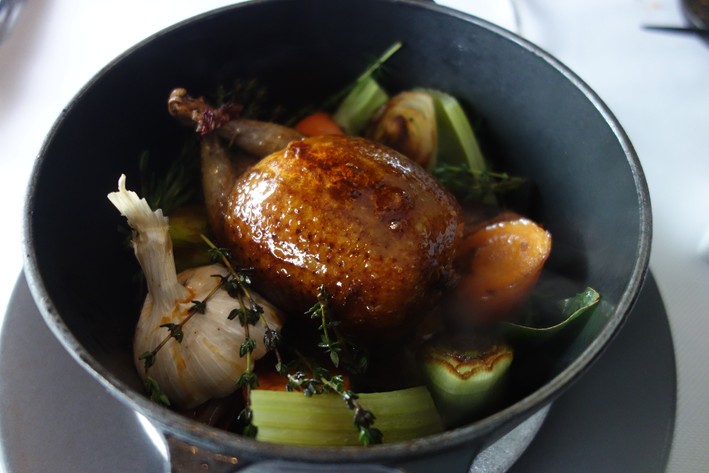 pigeon
pigeon

-
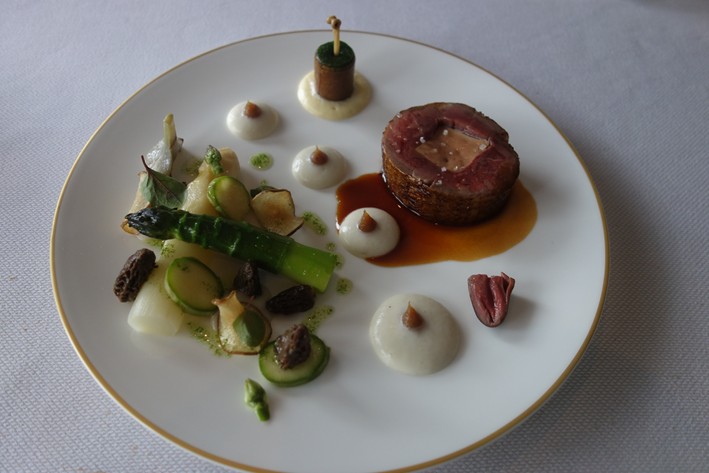 pigeon served
pigeon served

-
 dessert
dessert

-
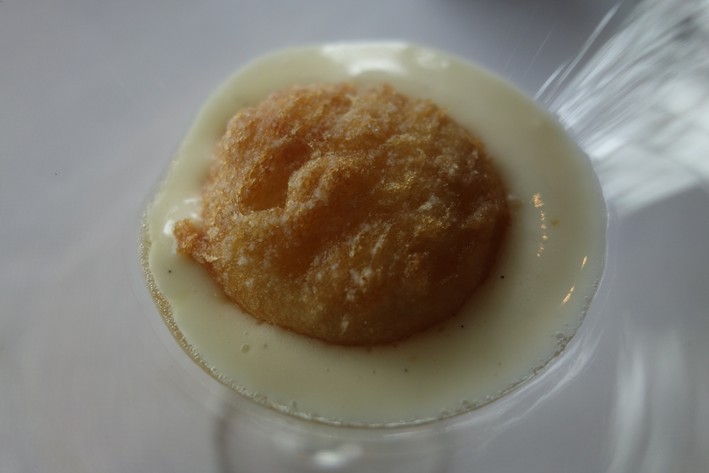 apple compote
apple compote

-
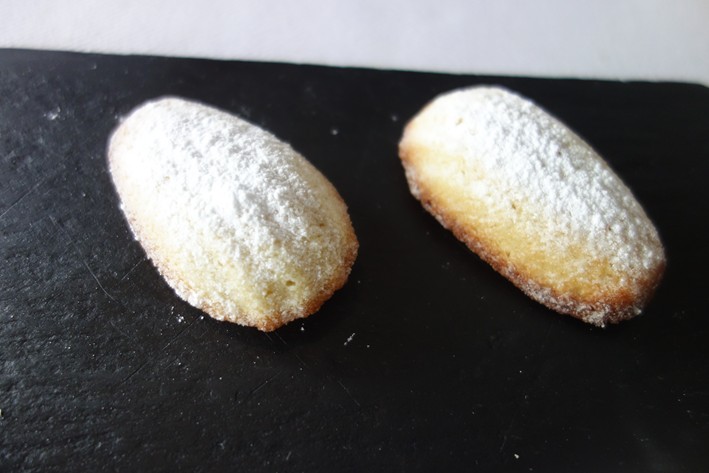 madeleines
madeleines

-
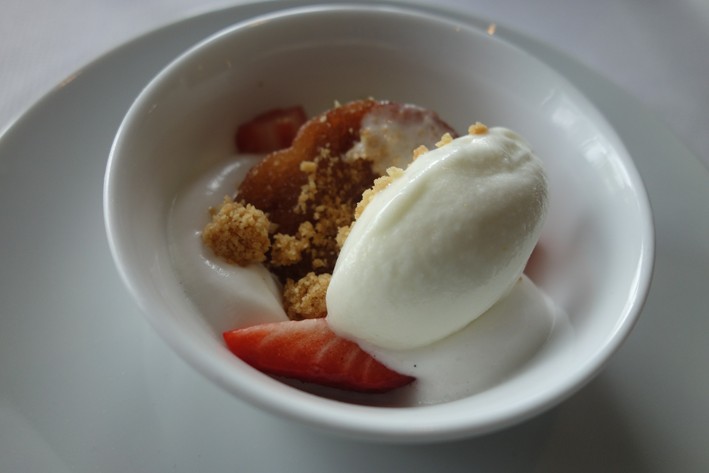 fruit crumble
fruit crumble

-
 chocolates
chocolates

European cuisine
 Average Price £85
Price I paid £122
Value for money
£££££
Overall rating 19/20
Michelin star
Average Price £85
Price I paid £122
Value for money
£££££
Overall rating 19/20
Michelin star

The type of cuisine served at this restaurant
Typical price for three courses and modest wine
What I actually paid on this particular visit
Calculated from overall rating/average price: £££££ is best, £ least good
Score for the food from 1 to 20, with 20 being world class
Currently has at least one Michelin star




















Add a comment
Thank you for submitting your comment, this will be checked and added to the website very soon.
User comments